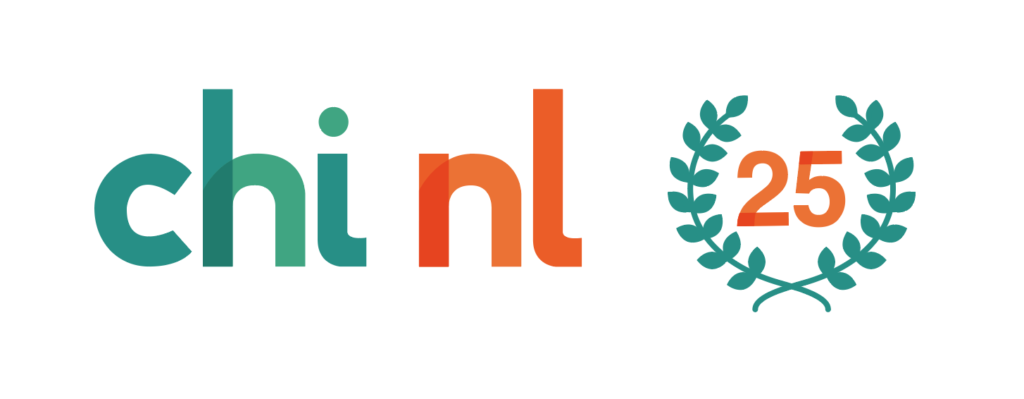Hello everyone! We are very excited to introduce this month’s CHI NL Meet guest Cristina Zaga, where she shares with us her bio and aspirations! 🙂

What is your name?
Hi, I’m Dr. ir. Cristina Zaga!
What’s your current job / occupation?
I’m an Assistant professor at the University of Twente in the Human-Centred Design Group and DesignLab.
And what are you currently working on?
My overarching focus is to design future emergent technology for social change. I focus on transdisciplinary and post-human methods to shape futures of care and solidarity.
Three projects I am currently working on are:
- A Dutch Network on Social Justice in Embodied AI (DEI4EmbodiedAI) through which together with colleagues we realized four workshops and produced open-access resources readily available for the academic and societal community in embodied AI. The initiative focused on broadening participation in the development of AI in computer science (i.e., who takes decisions about what to develop, how to develop, who takes a particular perspective, and which values to embed) and on changing current practices producing transdisciplinary tools to open a societal conversation.
- A seed-funded project on Good Robots for the Future of Work in which we investigate barriers and enablers to include ethically-oriented design in the design of robots.
- M/Otherhoods with designer Lisa Mandemaker on reproductive futures. In particular, rethinking the concept of artificial wombs, departing from the technologically oriented perspective on artificial gestation to a mean to explore new family structures, relationships and to emancipate new forms of motherhood.
What is your proudest achievement so far? Can be anything, professional or otherwise.
At the moment, my proudest achievement is being able to work on projects and with many close collaborators that care about making a positive impact on society with an eye on social and environmental justice. It is possible to promote a healthier lifestyle using our methods and approach.
Which person, paper, or concept has had the biggest influence on your work?
There is a triad of concepts that really shaped the way I work: post-human feminism (Rosy Braidotti’s work), transdisciplinarity and the cooperative hypothesis of human communication (Micheal Tomasello’s Work).
They may sound obscure, complex and distant one from the other, but I believe they complement each other. Post-Human Feminism provides the nuts and bolt to decenter outdated and emarginating models of “being a human”. From our practices in Human-Computer Interaction (HCI) and design, it nurtures a perspective on plurality, solidarity and social justice.
Transdisciplinarity is a way to tackle the complexity of societal challenges with a academic and non-academic knowledge on equal footing that is geared to achieve social change through science and design.
Finally, the cooperative hypothesis of communication posits that our structured social communication stemmed from our needs to communicate with human and non-human agents and from cooperative interaction. Interdependence, cooperation and altruism are thus at the basis of human communication, and — I argue — it should also be the model for our communication with artificial agents.
What breakthroughs or developments do you expect in your profession in the next 10 years?
I wholeheartedly believe that we are going to see an epistemological and methodological change in HCI, Human-Robot Interaction (HRI) and in general in the design of technology. I believe that many are going to advocate a transdisciplinary post-human perspective. We are going to explore epistemologies and methodologies that de-center the human (and what we have considered as human) and have a more holistic and eco-systemic views on flows of knowledge / knowledge generation. This perspective includes a multitude of “otherness” in terms of gender, race, class, age, politics (Braidotti, 2022), artificial agents (Artificial Intelligence and the like) and nurture (Forlano, 2017) a healthier population.
What have you recently read, watched, or listened to that you would like to recommend to others?
I am hooked with the Good Robot podcast by Eleanor Drage and Kerry Mackereth. This podcast weaves philosophy, technology and feminism magisterially.
Finally, a chance for self-promotion: what should we read, watch, or listen to so we learn more about your work?
You can read the book “Diversity Equity and Inclusion in Embodied AI” I have co-authored with Maria Luce Lupetti, Nazli Cila, Minha Lee, Gijs Huisman and Eduard Fosch-Villaronga. This book is intended for students, researchers, designers, developers, and societal stakeholders working with embodied AI, who interested in contributing to more equitable and just futures
Follow Cristina on Twitter: @Zaga_daga
CHI NL Meet takes place around once a month, where board members and blog editors Lisa and Abdo invite a member of CHI NL to introduce themselves to the wider SIGCHI community and the world 🌍.

CHI Nederland (CHI NL) is celebrating its 25th year anniversary this year, and we have much in store to acknowledge this occasion. Stay tuned!
